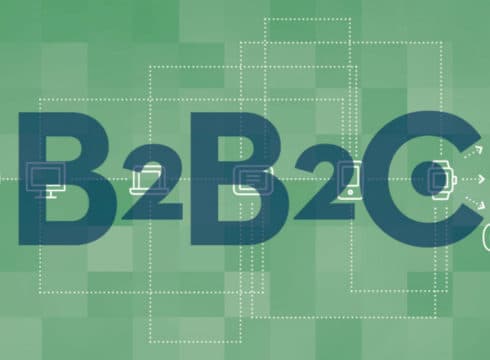B2B business models remain a big attraction for investors
India is poised for big growth in B2B2C, hence localising tech solutions from big players
This seems to be a good time to incubate B2G models as well
Inc42 Daily Brief
Stay Ahead With Daily News & Analysis on India’s Tech & Startup Economy
As a globally recognised startup hub, India looks all set to translate 2018’s challenges into opportunities for the startup sector in 2019.
One major funding trend that I expect in 2019 is increasing venture capital interest in startups delivering in the B2B2C category.
B2B And B2C Model: An Overview
There are different models of startups in the country right now, and let’s begin with the differences between these to better understand them. Two of the most common business models are B2B – Business to Business – and B2C – Business to Consumer.
As the name implies, B2B startups render products or services to other businesses. B2Bs are fairly well-accepted business models as most businesses consider them an investment in their own future growth and success.
For example, hiring a SaaS provider or customer relationship management provider for your startup is an investment in technology through which you expect to improve the efficiency (return on your investment) of your services. Investments and hence, relationships, tend to be long-term in this sector as most services the startup will buy are critical to its functioning.
Because of their criticality to the startups’ ecosystem, B2B business models remain a big attraction for investors and continue to offer good returns on investments. The entrepreneur is often perceived as having more control in this type of business model than compared with our next model.
The most well-known business model, the B2C, of course, remains the most attractive to investors, as these address direct demands and market needs most often, thereby guaranteeing almost immediate returns on investment. The two key drivers of your success, at least for consumers, is entertainment and/or novelty, and your sales and investment cycles are relatively shorter compared to B2B or B2G models.
Therefore, B2C models need to be able to understand trends and “consumer waves” at an expert level to succeed and sustain for longer periods of time.
B2B Vs B2G
Sharing some similarity with the B2B model, B2G emphasises services or products rendered to Governments by businesses, implying long term relationships, practicality and functionality over entertainment or novelty. However, this business model is definitely not for the weak at heart!
The long periods of tenders, and the efforts required to establish a relationship, not to mention the value of experience and reputation, are definitely arduous. However, in India, the government appears to be making a conscious effort to foster innovation, especially from startups, and this seems to be a good time to incubate B2G models.
The Maharashtra Startup Week in October 2018 is one such sign, the state has invested in blockchain for technology innovation as well fintech.
B2B2C: The Star Of 2019
In 2019, I expect investors to bet on an emerging business model – B2B2C. Sectors like fintech, which already receive significant investor interest, and insuretech are helping accelerate financial inclusion in India, catering to the last mile interests as well.
We have seen a spike in last mile connectivity in rural and semi-urban pockets thanks to players like Jio, who are capitalising on startups using the B2B2C models. India is poised for big growth in B2B2C – our language and culture changes almost from district to district – hence localising tech solutions from big players can be a case study for success.
Already, many sectors have started investing or partnering with startups using B2B2C models – agritech, insurance like I mentioned before, healthcare, education. To illustrate an example, let’s see the insurance sector.
The insurance sector is quite resource intensive, in that, it requires a large network of agents to sell its products to reach customers. At the same time, this sector has been unable to reach the rural and semi-urban areas to deliver this. By tying up with tech startups, the sector is revving up its customer base and leveraging technology to reach those who are remote and perhaps more in need of insurance products.
The basic principle behind the B2B2C model is an approach of collaboration, which helps build scale and sustainability into startups. It’s challenging for even the most innovative start-ups to compete with the big players, especially given the climate of incubation and startups being absorbed by bigger players.
At a NASSCOM meet in 2017, most investors were bullish on B2B2C models of fintech. Many banks, insurance companies, NBFCs and mutual funds are now tying up with startups to reach more customers and make business processes smoother on all ends.
Many of the established players in the sector are now trying to revamp their customer experience processes and become more customer-responsive, especially since the demonetisation and the drive for digitisation. Investors are definitely interested in startups which are offering better customer connectivity for such established players.
{{#name}}{{name}}{{/name}}{{^name}}-{{/name}}
{{#description}}{{description}}...{{/description}}{{^description}}-{{/description}}
Note: We at Inc42 take our ethics very seriously. More information about it can be found here.


